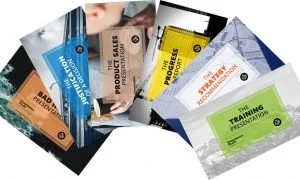It’s Time to Improve Speaking Skills for the Classroom and Beyond


Most adults fear public speaking and, let’s me honest, lots of us aren’t actually very good at it. If adults who have had years to hone the skills are not very good, what do you think the average school kid is like? But is that really their fault? Have they ever been taught the art of oral communication? Evidence suggests not and, in this article, Erik Palmer outlines not only why it is so critical that this changes, but shows us the way.
Why do people fear public speaking?
I’m sure you’re familiar with the stories. Do a little web search and you’ll find that 75% adults fear public speaking, public speaking is the number one phobia people have, and fear of speaking is more common than fear of death. Do a micro-survey of people around you. Sure enough, many will say they hate public speaking. So yes, we can all accept that speaking scares many adults. But why? I suggest that it is because no one ever taught us how to do it.
Years ago, I had a chance to go for a plane ride in a two-seat, single-propeller plane. The pilot was an elderly man, and when the plane left the runway, I had a moment of panic. What if he has a heart attack? A stroke? Ground control will ask me to land the plane, but I have never been taught how to land a plane. I’ll die! Hence the panic. Would I have panicked if I were a pilot? Of course not. The fear of speaking comes from the same place: being asked to do something no one has prepared you to do.
Oral communication is seriously shortchanged in schools
Every teacher at every level in every subject has activities where students are forced to speak. Discussions, explaining answers at the board, book reports, poetry recitations, research reports…teachers make students talk. Unfortunately, they don’t teach students the skills needed to talk well.
After a career in business, I went into education. My first job was teaching fifth and sixth graders in an elementary school. In getting my teaching license, I had classes about how to teach reading, writing, grammar, spelling, science, and social studies along with classes about behavior management and lesson design. I had no classes about teaching speaking. My school had grade-level basal readers, novel sets, a spelling program, science kits, social studies textbooks, and math books, but absolutely nothing that offered instruction about effective verbal communication. It showed. I told my students that they would have to read a book and give a three to five-minute book talk. The talks were mediocre to dreadful. Good books seemed terrible after these presentations.
Think of it: these students had been in school for six years and had often been required to speak, yet they didn’t know how to speak well. No one had ever taught them the skills of effective communication.
I wasn’t blameless, either. I assigned the book talks, but did I give any lessons about how to do a great talk? No. Before I asked them to do an essay, I taught lessons about punctuation, capitalization, run-on sentences, sentence fragments, and other pieces of writing. Sadly, like every other teacher, I asked them to speak in public without preparing them for the task. No wonder they didn’t do well. No wonder they were uncomfortable.
And after many years of being put in the same spot, no wonder they came to hate public speaking. I resolved to stop being part of the problem and begin teaching students how to be confident, competent speakers and presenters.
What are the skills of effective oral communication?
There are literally thousands of books on the topic, but none designed to help educators teach young children. Looking at those books reveals that there is no common language, no agreement on the key skills, and no suggestions about how to teach speaking.
I ended up writing a book, Well Spoken: Teaching Speaking to All Students. To make the complex art of effective oral communication understandable and teachable to children required coming up with a framework of essential skills.
First, I broke speaking into two distinct parts: creating the message (what to do before you open your mouth) and performing the message (what to do as you are speaking).
All speaking – formal or informal; one-to-one or large group; in-person or digitally – involves both of these. Some students are good at coming up with something powerful to say but not so good at saying it. Some are good performers but have a hard time building talks worth performing. As an analogy, think of screenwriters and actors. Effective speakers are good at both parts.
So how do you create a talk?
Before they open their mouths, I tell students to think about:
- Audience
- Content
- Organization
- Visual Aids
- Personal appearance
I have little lessons about each. For example, you may be a football fan, but is everyone in your audience a fan? Do they all know about QPR, relegation, and the FA Cup? Before you write your speech content, analyze the audience and build a speech for them.
As they speak, I tell students about the six pieces of effective performance:
- Poise
- Voice
- Life
- Eye contact
- Gestures
- Speed
Simple, understandable language. “Life” replaces inflection, vocal modulation, expression, enthusiasm, and other confusing and wrong descriptors.
The biggest weakness of almost all speakers is that their talks are dull. They speak in a lifeless way. My lesson? First, to demonstrate the importance of adding life, I have students practice with phrases where the meaning can change depending on how it is said.
I don’t think you are dumb. (But everyone else does?)
I don’t think you are dumb. (You know I am?)
I don’t think you are dumb. (You think he is?)
Next, I give students a small practice speech where adding life makes a huge difference. Have different students speak encouraging each one to add lots of feeling.
One time, we had a squirrel in our house. When we opened the door to let our dog out, it ran right in. Everything got crazy! The squirrel was running all over! My mom was yelling, “Do something! Do something! Get that thing out of here.” My sister jumped on a chair and stood there crying her eyes out. My dad was chasing the squirrel with a broom from room to room. “Open all the doors!” he yelled to me. “I did already!” I yelled back. Finally, it ran out. After a minute or so, my dad started laughing. “That was interesting,” he said with a chuckle.
Those combined might take 40 minutes of instructional time, and every student will learn one of the keys to effective speaking. Will all students master this? Of course not, just as not all master the skills of writing or math or drawing or anything. But all will get better, and all will understand how to communicate better. And it turns out that the framework is useful for adults, as well. After all, no one taught them how to speak well, either.
Poor speaking skills are a barrier to professional and social success
Oral communication is on display like never before as every digital tool seems designed to showcase speaking. Think of Skype, video-conferences, webinars, videos, podcasts, FaceTime, and more. All of them put verbal communication in the spotlight.
I was speaking with the owner of several restaurants recently. He told me he sped up his hiring process by requiring the submission of videos. Instead of a parade of people coming into the restaurant for time consuming twenty-minute interviews, he could very quickly weed out many applicants based on the communication skills displayed in the video. Poor speaking skills cost those applicants a job.
Think of international business. When I presented in the Middle East, my trip was arranged using online oral communication tools linking Ireland, the United States, Egypt, and Saudi Arabia. Oral communication is a key component in competing for the world’s business. There can be no disagreement: poor speaking skills are a barrier to professional and social success.
George Anders, a senior editor at LinkedIn, a professional networking site, has noticed this new reality and said,
What we’re seeing now is much more of a demand for oral communication rather than written communication. That has big implications in our educational system.
Ignoring the number one language art in our schools cannot continue.
I began by talking about the fear of public speaking, but my goal isn’t to diminish the fear so that people feel better. My goal is to give everyone the ability to speak confidently and competently in any situation.
If you have children, visit their school. Is there an emphasis on specifically teaching speaking or do they just make students talk sometimes? Demand oral communication lessons.
If you have employees, assess their verbal skills. Are the poor skills they have from an education that ignored speaking hurting your business? Get the employees help.
And if weak communication skills have been a barrier in your career, educate yourself now. Know that the process is long. There is no one-and-done book or training that can make up for missing years of oral communication instruction in schools or cure bad speaking habits acquired because of that lack of instruction. And in addition to building your own skills, begin to advocate for more attention to the most important way we communicate. Speaking matters.












Richard I. Garber
17th February 2020 at 9:25 pm
Erik:
Excellent points. There is a rather obscure statistic that 24.9% of U.S. adolescents fear speaking in class. It is more relevant than the 75% for adults you mentioned. See my JUne 11, 2012 blog post at Joyful Public Speaking titled What social situations scare American adolescents, and what are their top 20 fears.
Rosie Hoyland
18th February 2020 at 8:56 am
Interesting… perhaps there’s hope for the next generation…
Chester Yates
11th December 2020 at 10:34 pm
Found this really interesting, thanks for sharing!